On the trail of the outlaw shooters threatening the Pacific Deer Herd
A black tail deer ducks under some fallen pine branches as a pickup truck cruises by. Behind the wheel, game warden Dave Moskat glimpses the doe cantering into sunlight that’s flashing on the crisp, heat-seared weeds along Mount Akum Road. The sky is blue over this wash of oak woodlands in El Dorado County, but Moskat is steering his truck straight for a long thundercloud curtain darkening the mountains ahead.
He’s driving towards a secluded clearing near the border of federal forest land—the site of a poaching crime that landed someone in prison. It’s raining by the time Moskat reaches the spot, a pasture hemmed in by cedars, choke cherries and a line of would-be Christmas trees. It’s three miles west of Grizzly Flats.
Two-and-a-half years ago, a doe was moving through the field’s high grass and wildflowers when the sound of a Mini-14 round exploded under the trees. Two men in camouflage watched her dip. These strangers had been stalking the area for a week, shooting other does around the clearing from the side of a quad-runner. This time they were escaping in a Dodge pickup.
A man nearby heard their gunfire. From the edge of the pasture, he watched the shooters leave. Then he noticed the doe limping around on her bleeding hip. She struggled for several minutes before dying.
Moskat got the call, arriving before the poachers could return with a bait-and-switch vehicle. He took the animal back to the California Department of Fish and Wildlife’s lab for a necropsy. That’s when Moskat learned the shooters hadn’t just killed the doe, they’d also killed the two fawns she was carrying inside her.
“I was pretty mad when I saw that,” the warden remembers.
With few exceptions, killing does is illegal in California because they sustain deer populations. Moskat started surveilling the pasture and talking to people living around Grizzly Flats. He quickly developed a suspect for the trigger man, 50-year-old Don Roy Leschke. Court records show Leschke has a string of felony convictions, as well as numerous arrests for poaching. That includes arrests for “spotlighting,” the illegal tactic of freezing a deer with floodlights from a truck and then picking it off while it’s paralyzed with fear.
A week later, Moskat and warden Erick Elliot passed Leschke on a secluded mountain road. They arrested him for driving on a suspended license. Searching his truck, Moskat spotted a knife coated in gooey animal fat and organ muck. He also found strands of deer hair around the truck cab. Moskat soon had a search warrant for Leschke’s property, where there was blood smeared on the dirt driveway and deer bones laying in the yard. The warden noticed security cameras posted around a greenhouse-style tent covering a marijuana grow. The video from the cameras showed Leschke drinking beer on a quad-runner before tucking a revolver into his waistband and hiding a rifle on his back under a jacket. He took off. Later, when Leschke returned into the camera’s frame, he was high-fiving a friend over another dead doe.
Moskat charged Leschke with being a felon in possession of a firearm and deer poaching. Leschke fled to Idaho, hiding for a time in its backcountry. He was captured by forest rangers, returned to California and sentenced to three years in state prison.
Now, as Moskat sits in his truck watching a spring rain batter the field, he knows Leschke’s case isn’t an outlier. Evidence and carcasses are mounting to show that the stakes around poaching in El Dorado County are only getting higher.
That’s especially true for the Pacific Deer Herd, a fragile group of migratory deer living on the western slope of the Sierra Nevada mountains. State wildlife biologist Shelly Blair, who studies the herd, recently found unmistakable signs it’s being targeted by criminal shooters. And while legal hunters abide by strict wildlife management rules and fund most of California’s deer conservation programs, poachers are having the exact opposite effect—directly imperiling the Pacific Deer Herd.
“This herd has the highest mortality for a deer herd that we know of in the entire state,” Blair says. “When you add poaching to that, it affects the survival rate dramatically.”
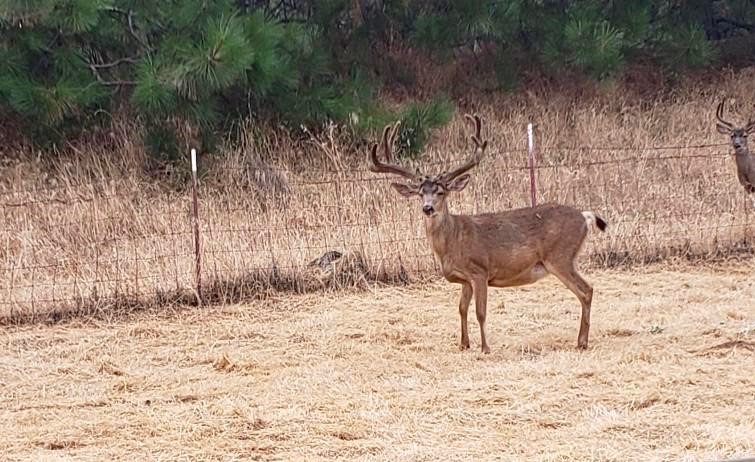
Wardens of the West
Moskat pulls his truck alongside a weed-laced snare of barbed wire hung from a drifting fence. He peers out on a lonely stretch of Bucks Bar Road. That name carries a tinge of irony for him. The largest buck Moskat ever saw in El Dorado County was poached at this very spot.
The sturdy mule deer had a broad rack of antlers so striking that residents on the nearby orchards and hillsides even had a name for him: “Big Daddy.”
On the evening of Sept. 2, 2018, a witness saw two suspicious men slip onto private property in the neighborhood, then saw Big Daddy running from the strangers with an arrow through him. The unknown men disappeared. Big Daddy staggered around and died near one of the houses.
When Moskat arrived the next morning, he learned the poachers had returned in the night to claim their kill. All that was left was the bloody arrow. After a lengthy investigation, Moskat arrested 26-year-old Connor Sheedy. Not only did Sheedy have a skull and rack that were identical to photos of Big Daddy alive, but he had deer meat in his freezer that Moskat matched through a DNA test to blood on the arrow.
Sheedy was charged with poaching, falsifying state documents and other violations. He eventually took a deal and pleaded no contest to trespassing for the purposes of hunting. Sheedy’s deer skull was confiscated, he was fined $2,500 and he was forced to re-take a hunter’s safety and ethics course.
Killing Big Daddy was brazen, but Moskat investigated another case last year that encompassed what’s become a more common type of poaching. It involved 59-year-old Richard Kowski, an amateur taxidermist who had been sharing eyebrow-raising photos of his hunting kills on Facebook. Kowski had gone as far as to enter one of his deer racks into the Safari Club International’s record books. But Moskat noticed the photos Kowski was posting didn’t seem to match the areas where he claimed to have shot the deer. What Kowski boasted were legal hunts in Tehama and Mendicino counties were looking to the warden like illegal scores in El Dorado.
Moskat put Kowski under surveillance and soon caught him baiting a wooded pondside off Pleasant Valley Road with molasses-cobs and fresh alfalfa. Baiting is a crime. It turned out that Kowski had been doing it for several years and then shooting deer from behind a blind he had built near his lure trap. Confronted, Kowski admitted to having poached five big bucks in El Dorado County through baiting. He was later sentenced to 44 days on house arrest and 36 months of probation and ordered to pay several hundred dollars in fines.
In the past, spotlighting and road-shooting were the most common deer-poaching techniques. Lately though, Moskat’s seen a lot of scofflaws switch to illegal baiting in isolated territory.
“There’s a new generation of poachers who have learned how to kill deer differently than the old ways,” he says. “It’s pretty rampant.”
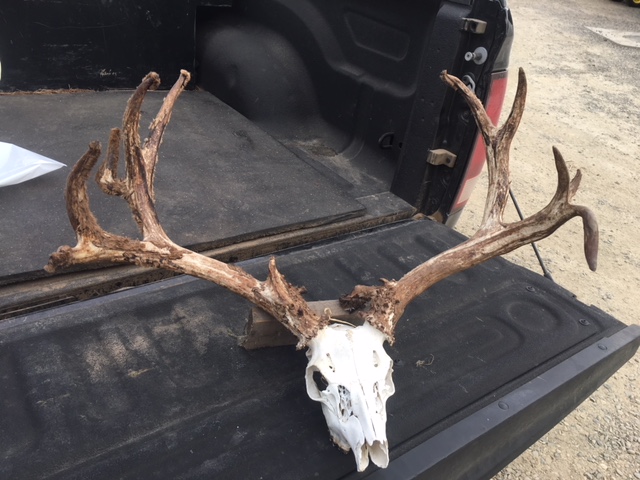
For Blair, the state wildlife biologist in El Dorado County, Moskat’s various investigations coincided with startling revelations around the Pacific Deer Herd. Unlike the county’s resident black tail deer, the Pacific Herd is made up of mule deer-Columbian black tail hybrids that move from a summer range in the Crystal Basin to a winter range above the American River near Georgetown. They have a different life strategy than the resident deer – and they’re more at risk. Blair has put radio collars on 45 of its does that send an alert straight to her cell phone anytime something happens to one.
Blair received a number of alerts in 2018. One signaled off Peavine Ridge north of Pollock Pines; using GPS and radio telemetry, Blair found the deer’s remains with a bullet hole right through the collar.
Another alert went off on forestland near Highway 50. Blair tracked down that doe and pulled a .22-caliber bullet out of her spine. Arriving at yet another signal off Rock Creek Road, Blair heard gunshots echoing all around the trees. She came back with a warden, but the poachers left no trace of that deer but its collar. After collaring a doe in the herd’s summer range, Blair found it dead just days later. The poachers had nearly twisted her head off as they wrestled with the transmitter on her neck.
Blair says four out of 45 monitored does poached in a year has disturbing implications. “That’s a big percentage of animals with a small sample size,” she says. “If you extrapolate that to the entire herd, that could be a big number that are getting poached from the population.”
The Pacific Herd is already under stress. Its survival rate has been teetering between 40% and 50% when to be healthy, it should be 80%. While that survival rate is reduced by predators, disease, vehicle collisions and other factors, the 10% or higher poaching rate is significant.
“Even in the wintertime, we see extremely healthy body conditions with his herd,” Blair says. “That means they should be surviving, but they’re not.”
All four collared does poached were killed outside the state’s deer hunting season so none were incidents of a legal hunter mistaking a doe for a buck.
The Larry Nelson, a 30-year hunting instructor and member of the California Deer Association, says El Dorado’s hunting community is incensed about the poaching. Like Nelson, many hunters consider themselves conservationists. The numbers back them up. Since lobbying for the Pittman-Robertson Act in 1937, legal hunters have funded more than $14 billion in wildlife protection and habitat restoration programs. Nelson says the hunters he knows play by the state’s strict rules because, in the end, they love nature.
“When you hear about poaching in your area, it just makes you angry,” Nelson says. “You think, ’How are these people getting away with it?’ You can either do something about it or not.”
Nelson decided to do something by serving on the El Dorado County Fish and Game Commission, which helps buy special equipment for wildlife officers, including robotic decoy deer, bears and turkeys and also helped purchase the radio collars.
Patrick Weddle, a professional biologist and avid fisherman who is co-chairman of the commission, says the poaching should be a wake-up call.
“We don’t have the same level of consciousness about wildlife—or the challenges faced by wildlife—that we do for larger environmental issues,” he says. “We don’t have an Earth Day for wildlife.”
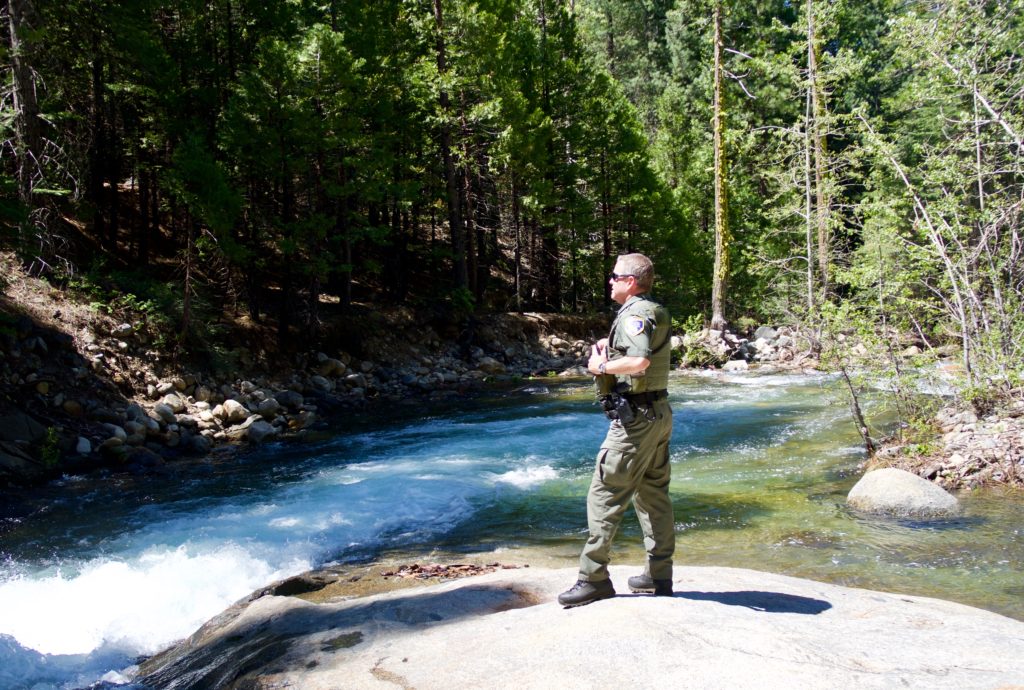
Alone in the backcountry
A bone-cutting wind rustles branches at the Rubicon’s trail head. There’s a dark, granite spur hulking over the tree line. The morning sun flashes white and blinding on the snow. Warden Lieutenant Stacey LaFave steers his truck along the vista, slowly heading down onto a shady mountain path. As he pulls off at the 6,500-foot elevation mark, the icy terrain gives way to a barren, thawed-out span of forest. LaFave spots a grimy station wagon parked at the edge of the pines.
The vehicle is empty. LaFave hops out and circles it, looking for signs of an empty gun rack. Approaching odd cars in the middle of nowhere is part of watching for poachers. So is doing it alone, even knowing that all poachers are armed.
Five years ago, LaFave noticed a Toyota Tacoma that looked out of place along a fork of the Cosumnes River. He jumped out and came face to face with a man holding a machete. LaFave had his gun up until the blade dropped to the ground. The stranger, along with two other men, were illegally catching 53 native trout with a gill net across the river. They were all arrested.
“I just assume that every person I contact is either carrying a gun, a knife or both,” LaFave says, clearing the station wagon. “You just can’t let your guard down. For me, it’s a matter of being courteous, but having it in the back of my mind that the person could switch at any moment.”
In 2016, a warden assigned to Humboldt County was patrolling near Highway 36 when he saw two men in truck spot-lighting for deer. When he tried to pull them over, 24-year-old Shawn Hof opened fire on him. A high-speed chase ended when Hof’s truck crashed into a tree.
California has roughly 290 game wardens patrolling 163,696 square miles of beaches, marshes, deserts, hills and mountains. According to the Fish and Game Warden Association, it has among the fewest wildlife officers per person of any North American state or province. In El Dorado County, that ratio doesn’t just make finding poachers hard, it means encountering armed lawbreakers alone. Sometimes a warden’s nearest back-up, usually a sheriff’s deputy, is 30 minutes away.
That dangerous reality hit home in 2005, when a team of wardens was ambushed inside a large-scale marijuana field that was destroying the Sierra Azul Preserve. Growers opened fire with assault rifles, shooting one warden through both legs as the others engaged in a chaotic firefight. The wardens killed one grower and got their fallen comrade to a helicopter, preventing him from bleeding to death.
The gun battle started what John Nores, one of the wardens involved, would later call “the war in the woods”—a series of confrontations between the wildlife department’s law enforcement officers and black-market marijuana operators linked to Mexican drug cartels. Poaching is also common with cartel-linked growers, though they kill more wildlife through highly toxic chemicals they leave on public lands. In 2015, a warden went into an illegal marijuana site at the Stone Lakes National Wildlife Refuge and confronted a suspect aiming a gun at him. The warden walked out of the refuge alive. The grower didn’t.
Rolling through desolate back country can mean more unpredictable threats, too. In 2013, game wardens were the first law enforcement officers to encounter the rogue cop-turned-serial killer Christopher Dormer as he was hiding in the San Bernardino mountains. Dormer fired several rounds into a warden’s vehicle before holing up in a cabin where he was later found dead.
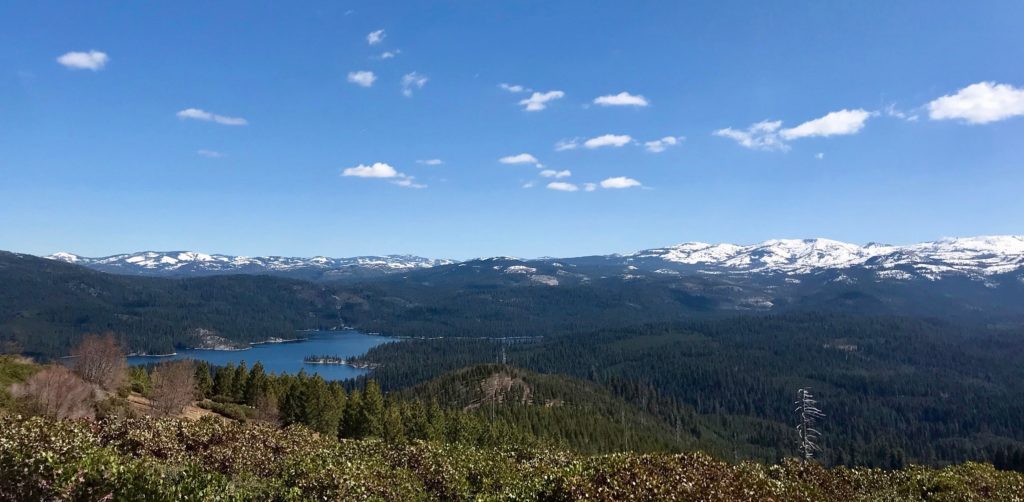
Silent woods, lawless culture
Long, lancing shadows bend on the mountainside as LaFave’s SUV pushes down the road. It’s a summer afternoon and he’s patrolling a remote slope of the lower Sierra. The temperature is rising. He looks out on the ridge ahead of him to see a massive shadow lumbering through the brush. In an instant the blur gets bigger in his driver’s window. Then she comes into view—a California black bear. She’s heavy and cinnamon-colored and watching two little cubs scale separate trees.
LaFave slows alongside the mother bear. She rears up on her hind legs, tracking him as her cubs start ripping their way down the tree trunks. When they hit the ground, the mother dashes into the brush with her offspring scrambling behind her. But the sow hasn’t left the area; she’s just camouflaged herself. LaFave looks up to spot a third cub teetering high on a pencil-thin pine tree. Its paws start slapping, its belly hitching and bucking down the side of the bark. It pauses to peek at the SUV and then spirals down onto the pine needles. The warden catches it dart into the forest cover with its family.
It’s rare to see a bear with three cubs.
“That sow is really healthy looking and has great coat,” LaFave says. He adds with a smile, “You could kind of see the way she signaled to the cubs, ’Time to go!’”
But for LaFave, the sighting also brings back a memory from this ridge line that’s nothing to smile about.
That case started a little more than five years ago. Wardens Darrell Stevenson and Liz Gregory were patrolling just up the way on Cat Creek Road when they spotted a truck with a carpet and chain on its hood and dog crates in its back. They knew it was a houndsman’s rig. Prior to that year, the most common way of hunting black bears during California’s brief season was by tracking and chasing them with hounds.
But the state had just outlawed the practice. It was also late April and bear season had been closed for months.
The wardens pulled the truck over, contacting Arthur Martin Blake and George Vitali. They asked the men if there were guns in the truck. The men said no. The wardens asked if they’d been hunting. The men said no. Directing Blake and Vitali to get their hounds out, the wardens started an inspection, eventually finding a holstered revolver in shopping bag and a backpack hidden in the back of one of the dog crates. Inside the pack were 20 black bear claws streaked with fresh blood. There was also a red-stained knife. Then, pay dirt: the wardens unwrapped some plastic packets to find three bear livers strung to three gall bladders.
Bear gall bladders have been known to sell for as much as $10,000 each to buyers based in Asia, where the bile is used for traditional medicines. LaFave’s team eventually determined that Blake and Vitali had slaughtered a mother bear and her two cubs, hacking off their paws and cutting out a single organ from each.
“These guys were just out there that day for nothing but poaching bears to get the gall bladders for the black market,” LaFave recalls, shaking his head. “They just cut out their organs out, cut their paws off, and left the rest of them to rot.”
Blake and Vitali were charged with unlawful possession of bear parts, a felony. After pleading guilty to a general count of poaching, they were both sentenced to 30 days in jail, 36 months of probation and $5,000 in fines. Court records show they were reported to the Interstate Wildlife Violator Compact, which typically leads to a hunting license being suspended in 45 states.
While California’s black bear population isn’t endangered, conservationists worry that the wasteful killing fuels a broader poaching culture that is responsible for the harmful killing of raptors, the overfishing of native trout and now the targeting of the Pacific Deer Herd. Hunters and fishing enthusiasts debate whether El Dorado County’s prosecutors and judges have always given adequate attention to the problem.
“I don’t think we’ve taken it very seriously here,” says El Dorado County Supervisor Brian Veerkamp, an avid hunter. “Up until a few years ago, the fines and prosecutions in our county were light.”
There are signs that’s changing. With urging from Veerkamp and the county’s fish and game commission, the District Attorney’s Office is having some prosecutors specialize in wildlife crime. The fish and game commissioner recently gave Deputy District Attorney Brittany Griffith an award for the work she’s done on poaching cases.
“If half the people in your county hunt and fish, and half people in it don’t agree with that, the one thing everyone has in common is they’re against poachers,” LaFave says. “Going after them is a win-win for everybody.”
Scott Thomas Anderson is also the writer-producer of the true crime podcast ‘Trace of the Devastation’

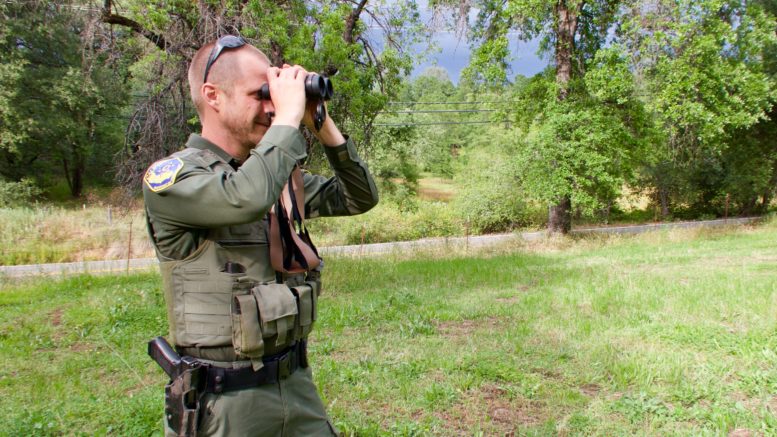
If poachers are caught red-handed, shoot them on the spot. When governments use laws to fight outlaws, governments lose. HM
Bless these CA Game Wardens for the work they do. Many Americans are unaware of the rampant poaching and illegal grows that are destroying our wild places here in the US. They think it happens in Africa and Russia. This article provides a close look at how bad it is here in California and how important these wardens are to safeguarding our wildlife.